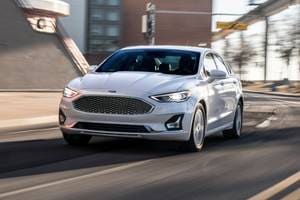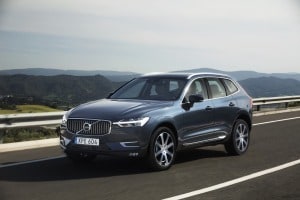May Auto Sales Disappoint Amidst Fears of Slowing Economy

Here in Southern California, June is characterized by cool, foggy mornings and evenings and the summer sun often only breaks through for a few hours midday. We call this "June Gloom" and it can be quite discouraging when warmer May days gave the impression that beach weather was just around the corner. The auto industry hit its own June Gloom of sorts today, with May sales dropping to 13.8 million at a seasonally adjusted annual rate (SAAR), after four months of SAARs above 14 million. Add this to a week of less than reassuring economic data reports and one cannot help but wonder, as Chicken Little did, if the sky is indeed falling. A closer look at the data identifies some risk factors, but also provides reassurance that concerns about decreasing consumer demand for new cars are premature.
Now You See It, Now You Don't: Assessing Signs of Decreasing Demand
The first sign that consumer demand may be decreasing lies with incentives, which Edmunds.com estimates to have increased nearly $100 per vehicle on average since April. But, while increased incentives could indicate a greater need for automakers to "pull" consumers into the dealerships, increased incentives could also mean that the mix of vehicles sold has shifted to include more expensive vehicles (with higher incentives in dollar terms). Data reflecting discounts from MSRP for May, available next week, control for vehicle size and will shed some light on the nature of May incentives. Given how low discounts from MSRP have been recently, an uptick would not be surprising but the May discount is unlikely to come close to pre-earthquake highs in any event. Meanwhile, there is evidence that the mix of vehicles sold shifted in May. Gas prices fell over $0.30 during the past two months, which typically results in consumers shifting back to larger, less fuel efficient, more expensive vehicles. And, initial May sales data by segment show that while small car sales are still strong, truck sales have increased.

A second possible sign that consumer demand may be decreasing comes from the weaker than expected Memorial Day sales. Memorial Day, which has contributed a sizable portion of May sales during the past few years, did not constitute as large a part of May sales this year. But, the possibility also exists that the auto industry is returning to more ordinary times. That is, perhaps automakers do not need to rely as strongly on deal messaging to draw bargain-hunting consumers into the market, and rather than waiting for deals, perhaps consumers are buying cars on an as-needed basis. At this point, it is too soon to tell, but weaker Memorial Day sales alone are not enough to make a strong case for decreasing demand.
Lower SAAR Masks Strong Sales Levels
The focus on the sizable drop in the SAAR this month obscures an impressive fact: actual May sales totaled 1.31 million units, the highest May since 2008 and the second highest sales month of the recovery to date, after March 2012. This apparent inconsistency illustrates an underlying problem with the SAAR — namely, that it can be unreliable when extreme shocks, such as the recent recession and the more recent Japanese earthquake, and their aftershocks intermingle with regular seasonal effects that should be smoothed in the data.

What's more, May sales levels likely understate baseline consumer demand due to "pull-ahead" and "catch-up" earlier this year. That is, the warmer winter months brought out more car buyers than usual and fleet sales were elevated as renewed inventory attracted fleet customers who bought less in 2011 due to supply shortages.
Finally, May's sales numbers fly in the face of several recent economic data reports — including mixed signals about consumer confidence, moderate first quarter GDP growth, and a particularly disappointing jobs report — that appear to suggest that the economy may be slowing again. More likely, the economy itself is readjusting to its own baseline growth after the burst of hiring and spending that followed last year's slump. There are numerous risk factors in the market now through at least the end of the year — including the situation in Europe, slowing growth in China, the "fiscal cliff" in the U.S., ongoing U.S. debt issues, and the upcoming U.S. presidential election — that are adding uncertainty. But, consumers with jobs are still spending and income is still growing, albeit at a modest pace. For auto sales, consumer willingness to spend is key and as credit expands again, there is plenty of pent-up demand driving car shoppers back to market.
So, again, why are we so worried about consumer demand? Sometimes, when we get past the fog, June Gloom is not as bad as it seems.
Lacey Plache is the Chief Economist for Edmunds.com. Follow @AutoEconomist on Twitter.





